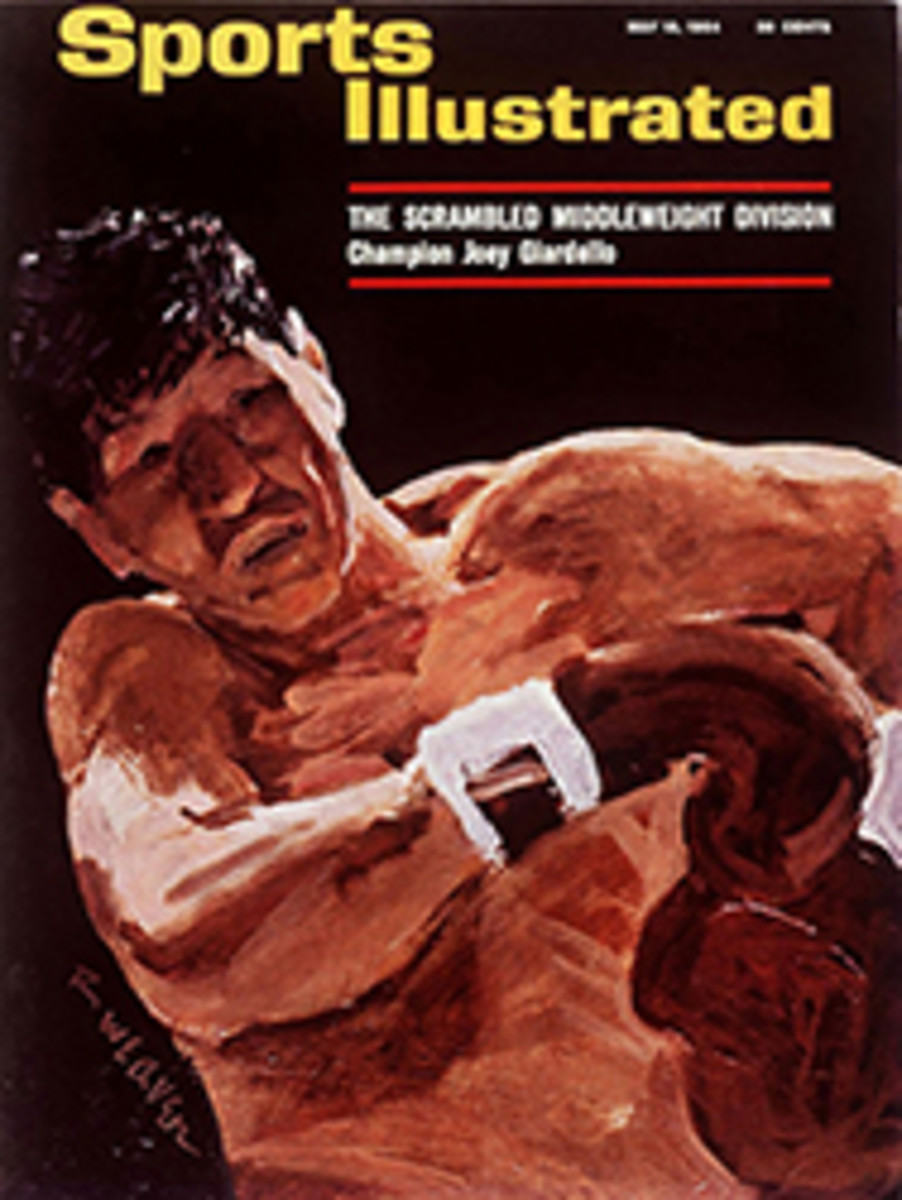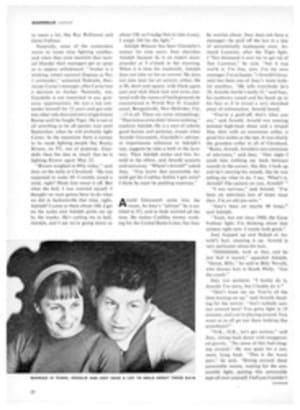
A Pitch that Baffled the Babe
The greatest ball club ever to wear the uniform of the old St. Louis Browns was not their one pennant winner in the wartime, made-do season of 1944. Those American League champions would not have been worthy to roll back the tarpaulin on rainy days for the team that fought the New York Yankees right down to the wire and lost out by a single game in 1922.
The Browns of '22 were the Browns of George Sisler at the peak of his career. He hit .420 for the season, hit safely 41 games in succession, stole 51 bases and was a picture of grace and poise at first base and at the plate that oldtime Brownie fans—a dwindling number, to be sure—still talk about.
That was the year of the great outfield—Kenny Williams (who drove in 155 runs), Johnny Tobin and Baby Doll Jacobson. That was the year the fans broke down the fences when the stands of old Sportsman's Park (now Busch Stadium) were jammed beyond capacity. That was the year of The Pitch—The Pitch that bamboozled Babe Ruth.
The Pitch was not thrown by the ace, Urban Shocker, who won 24 games in 1922. The Pitch that was the despair and frustration of Ruth was delivered by a 21-year-old, 135-pound stripling the Browns had signed out of the University of Missouri. His name was Hubert Shelby Pruett, and he was nicknamed "Shucks" because that happened to be the strongest word in his vocabulary.
Shucks Pruett liked to play ball, but his real ambition was to become a doctor like his father before him. It was only when he found himself in a major league uniform that he realized baseball might be the means of getting him through medical school. And things worked out exactly that way, although it took Pruett eight years instead of four to get his degree.
Credit to Christy
Today Dr. Pruett is 63, portly and white-haired. One day recently, after he had seen the last of his patients at his office in a suburb of St. Louis, he sat down at his desk with a cup of coffee and took a deep breath. "It's a long time ago," he said, "but I can remember every moment of that 1922 season."
He held up his hand and twisted his wrist in a motion that was the reverse of that used for a curve ball.
"The pitch that gave Ruth so much trouble that year," he said, "was my version of the fadeaway—actually a tricky kind of screwball—made famous by Christy Mathewson of John McGraw's New York Giants. Mathewson had been a boyhood hero of mine and I wanted to learn to throw his great pitch. There was an oldtime ballplayer named Barney Pelty living in my town in southeastern Missouri, and I asked him if I could learn the fadeaway even though I was a left-hander. Barney said he would coach me and pretty soon I was throwing it pretty well.
"By the time I was pitching for the varsity at the University of Missouri, the opposing hitters weren't getting a foul off the fadeaway. I threw the fadeaway three ways. Thrown overhand, it acted somewhat like a slider—it moved out. Underhand, the ball nose-dived—this was my big strikeout pitch. I also threw it with a three-quarter motion. Any way I threw it, the ball would break sharply away from a right-handed batter, break into a left-handed hitter.
"The first time I faced Babe Ruth was in relief. When I went out to the mound, I didn't know who he was. All I knew was that he was a left-handed hitter, and I didn't have much trouble with lefthanders. I struck him out with three pitches. Altogether, I think I faced Ruth 13 times that season and struck him out 10 times. In the crucial September series that decided the pennant, I beat the Yanks, 5-1, but Ruth got a homer off me. Not off the fadeaway, though. I wanted to throw it, but Hank Severeid, our catcher, shook me off and called for the curve. Ruth hit a line drive over the low right-field wall. There was no blocking screen at that point as there is in Busch Stadium today. Today, Ruth's homer would have been a double.
"I struck out Ruth maybe 15 times out of 30 times I faced him in '22 and '23. I don't think he ever hit my fadeaway. Toward the end of the 1922 season, I developed a sore arm. A lot of people thought the fadeaway caused my arm to go bad. Actually, the fadeaway was easier on my arm than the curve. I think my arm suffered from overwork. At one point, I pitched parts of six straight games. I guess I was one of the original firemen. One time I was sent in to face Ty Cobb with a count of three and nothing on him. He took the first two strikes I threw him and then went down swinging on the fadeaway. Later somebody told me that Cobb said, 'That kid won't last long with that crazy pitch.' "
Pruett smiled and glanced up at his medical diploma.
"Actually," he said, "I was a mediocre pitcher after 1923. Baseball became, drudgery, but I needed the money to pay for my medical studies. I went down to the minors and came up again with the Giants and ended up with the Braves. I was pretty fair in relief when I was with the Giants. I went to school wherever I could pick up a course where I had left off. After Missouri I attended Washington University in St. Louis, Harvard, the University of Chicago, Tennessee and finally got my M.D. at St. Louis University."
He lit a cigarette and took a thoughtful sip of coffee.
"My won-and-lost record doesn't look too impressive. What got me a reputation and kept me in baseball were those dramatic strikeouts of Ruth. Seeing the Babe strike out was almost as exciting as seeing him hit a home run. I owe him a lot. I only spoke to him once in my life. I met him in 1948 here in St. Louis at a baseball dinner sponsored by the Ford Foundation. Babe was receiving an award from The Sporting News. I went up and introduced myself and said, 'Thanks, Babe, for putting me through medical school. If it hadn't been for you, nobody would ever have heard of me.' The Babe remembered me. He said, 'I'm glad there weren't many more like you. I never would have gotten by in the major leagues. If I had anything to do with making you a doctor, well, I'm glad I helped somebody.' "

